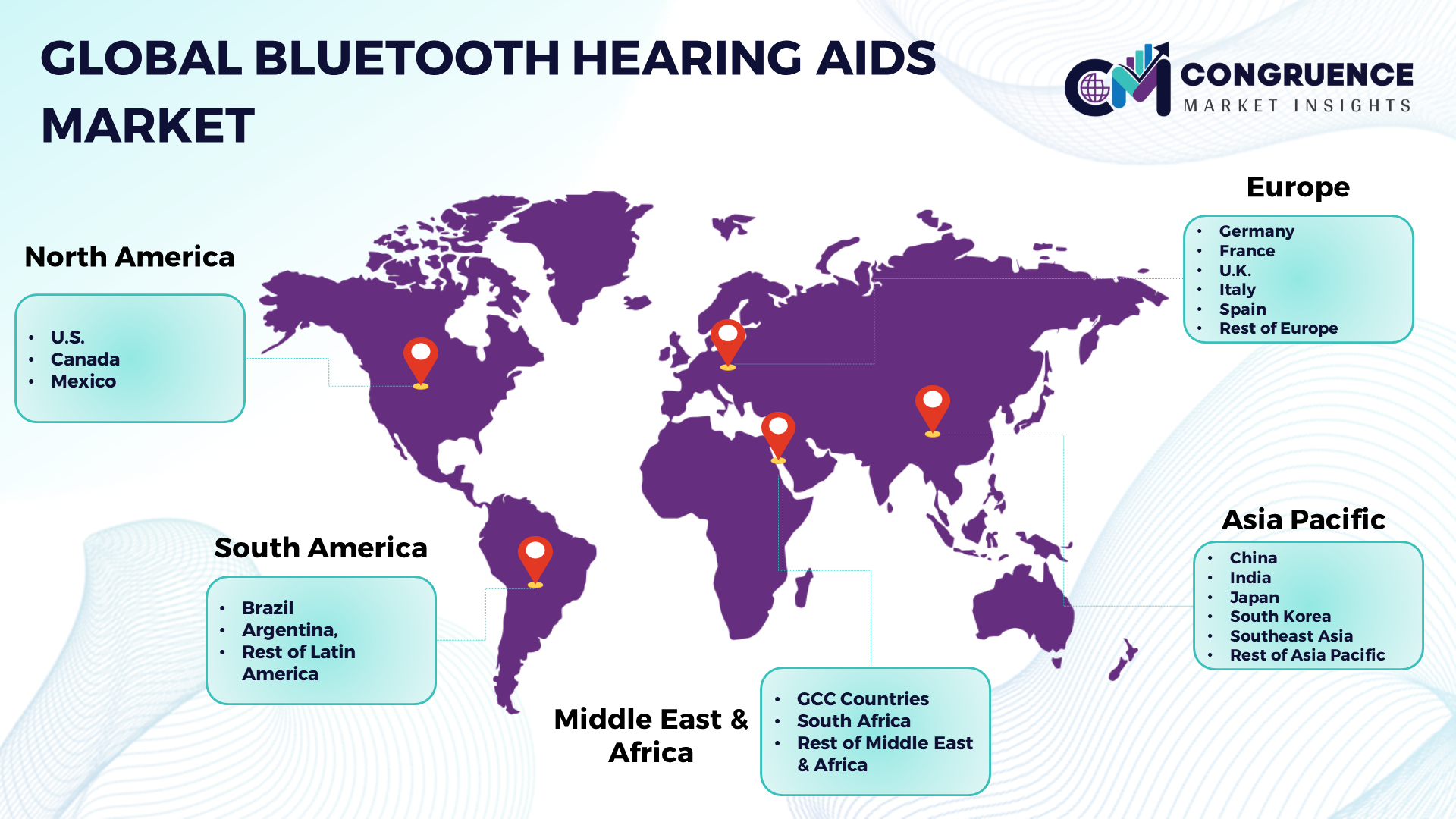Reports
The Bluetooth Hearing Aids market represents a groundbreaking stride in hearing assistance technology, offering a seamless and connected experience for individuals with hearing impairments. These advanced hearing aids leverage Bluetooth technology to wirelessly connect with smartphones, tablets, and other devices, providing users with enhanced control and customization. With a projected CAGR of 8.4% from 2023 to 2030, the Global Bluetooth Hearing Aids Market anticipates substantial growth, driven by the rising prevalence of hearing loss, technological advancements, and the increasing adoption of smart hearing solutions. Key product types in the market include in-the-ear, behind-the-ear, receiver-in-the-ear, and canal hearing aids, each designed to cater to diverse user preferences and comfort levels. The incorporation of both Bluetooth Classic and Bluetooth Low Energy technologies offers users versatility in connectivity options, paving the way for a more connected and accessible world for individuals with hearing challenges.

Bluetooth Hearing Aids Market Major Driving Forces
Rising Aging Population: The increasing global aging population contributes to a growing prevalence of hearing impairments, driving the demand for advanced and connected hearing aid solutions.
Technological Advancements: Continuous advancements in Bluetooth technology, along with improvements in signal processing and battery efficiency, enhance the overall performance and user experience of Bluetooth hearing aids.
Growing Awareness and Acceptance: Increasing awareness about hearing health and the benefits of Bluetooth hearing aids, coupled with reduced stigma, leads to higher acceptance and adoption rates.
Integration with Smart Devices: The seamless integration of Bluetooth hearing aids with smartphones and other smart devices allows users to customize settings, stream audio, and remotely control their hearing aids.
Bluetooth Hearing Aids Market Key Opportunities
Telehealth Services: The growing adoption of telehealth services provides an opportunity for remote adjustments and consultations for Bluetooth hearing aids, improving accessibility for users.
Customization and Personalization: Opportunities lie in offering highly customizable Bluetooth hearing aids, allowing users to adjust settings, manage preferences, and receive personalized hearing profiles.
Expansion in Emerging Markets: As awareness about hearing health increases in emerging markets, there is significant potential for the expansion of the Bluetooth hearing aids market in these regions.
Bluetooth Hearing Aids Market Key Trends
· Artificial Intelligence Integration: The trend towards integrating artificial intelligence (AI) in Bluetooth hearing aids for adaptive learning, noise cancellation, and personalized hearing enhancement.
· Waterproof and Durable Designs: The development of Bluetooth hearing aids with waterproof and durable designs to withstand various environmental conditions, enhancing usability and reliability.
· Rechargeable Battery Technology: The increasing adoption of rechargeable battery technology in Bluetooth hearing aids for eco-friendliness and cost-effectiveness.
· Voice Assistant Integration: The incorporation of voice assistants in Bluetooth hearing aids, allowing users to interact with devices, make calls, and access information hands-free.

Market Competition Landscape
The global Bluetooth Hearing Aids market is marked by intense competition, with key players focusing on innovation and user-centric design to gain a competitive edge. Companies actively engage in research and development to enhance connectivity, battery life, and overall performance. Notable players in the market include:
· Sonova Holding AG
· GN Store Nord A/S
· WS Audiology A/S
· Starkey Hearing Technologies
· Sivantos Pte. Ltd. (Signia)
· Cochlear Limited
· Widex A/S
· Rexton Inc.
· Audina Hearing Instruments, Inc.
· Eargo Inc.
These companies play a pivotal role in shaping the future of hearing aid technology, advancing connectivity solutions, and improving the quality of life for individuals with hearing impairments.
|
Report Attribute/Metric |
Details |
|
Base Year |
2022 |
|
Forecast Period |
2023 – 2030 |
|
Historical Data |
2018 to 2022 |
|
Forecast Unit |
Value (US$ Mn) |
|
Key Report Deliverable |
Revenue Forecast, Growth Trends, Market Dynamics, Segmental Overview, Regional and Country-wise Analysis, Competition Landscape |
|
Segments Covered |
· By Product Type (In-the-ear, Behind-the-ear, Receiver-in-the-ear, Canal Hearing Aids) · By Technology (Bluetooth Classic, Bluetooth Low Energy) · By Distribution Channel (Online, Offline) |
|
Geographies Covered |
North America: U.S., Canada and Mexico Europe: Germany, France, U.K., Italy, Spain, and Rest of Europe Asia Pacific: China, India, Japan, South Korea, Southeast Asia, and Rest of Asia Pacific South America: Brazil, Argentina, and Rest of Latin America Middle East & Africa: GCC Countries, South Africa, and Rest of Middle East & Africa |
|
Key Players Analyzed |
Sonova Holding AG, GN Store Nord A/S, WS Audiology A/S, Starkey Hearing Technologies, Sivantos Pte. Ltd. (Signia), Cochlear Limited, Widex A/S, Rexton Inc., Audina Hearing Instruments, Inc., and Eargo Inc. |
|
Customization & Pricing |
Available on Request (10% Customization is Free) |
